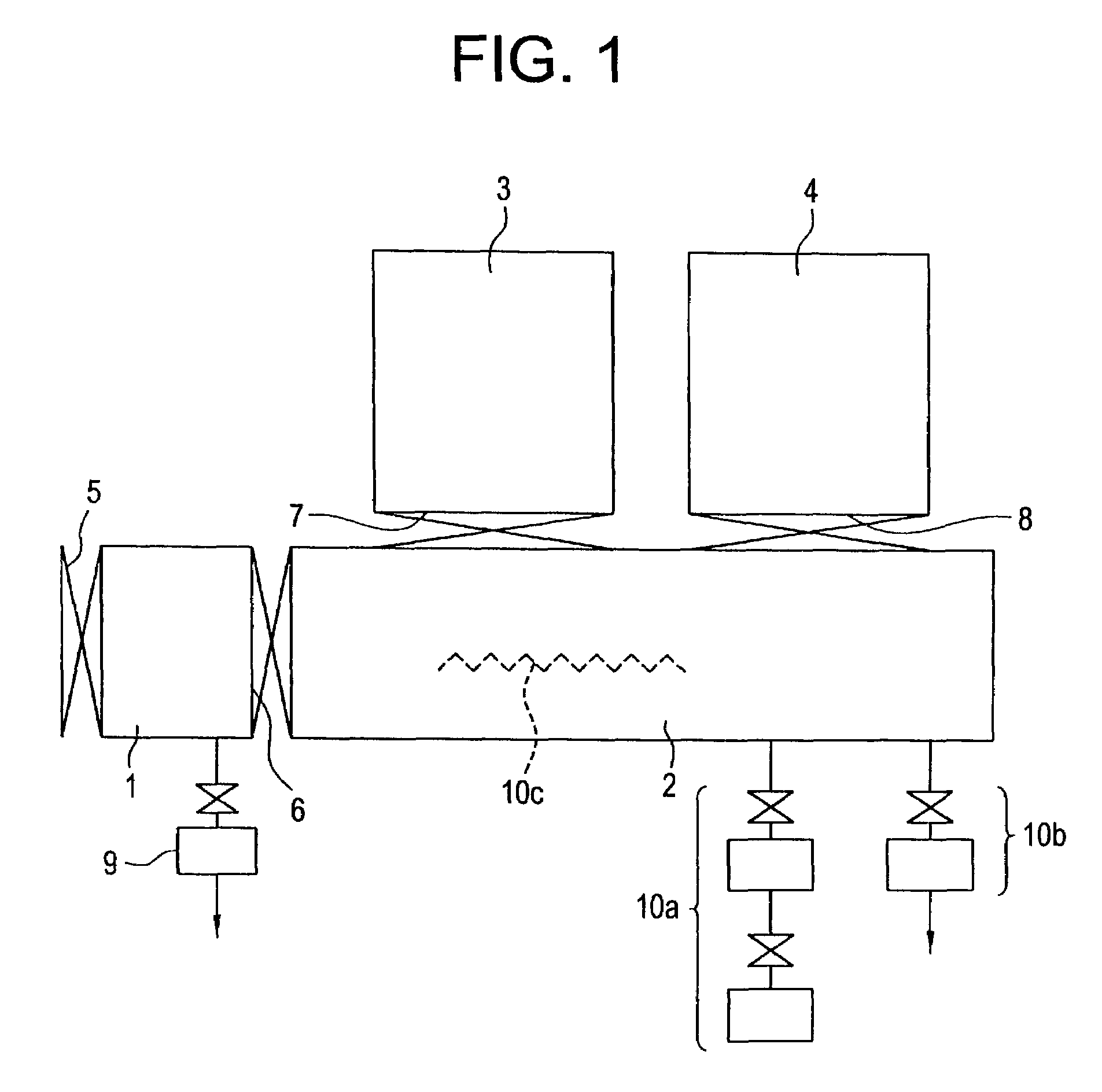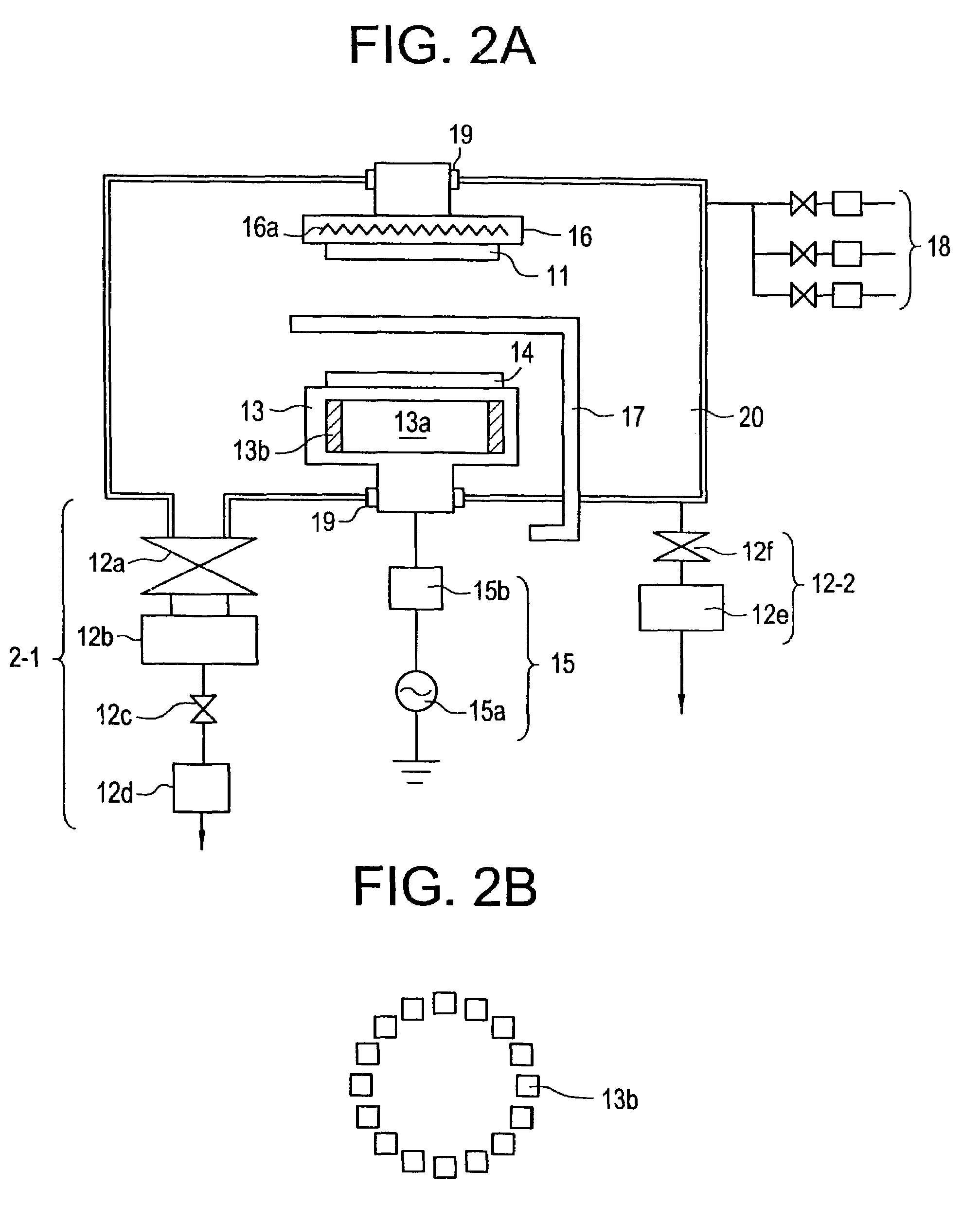Method of manufacturing gate insulated field effect transistors
a gate-insulated field effect transistor and gate-insulated technology, applied in the direction of semiconductor devices, vacuum evaporation coatings, coatings, etc., can solve the problems of difficult to achieve uniform semiconductor film deposit by low pressure cvd, direct deposition of polycrystalline, and insatiable electric characteristics of hydrogenated amorphous semiconductors deposited by sputtering
- Summary
- Abstract
- Description
- Claims
- Application Information
AI Technical Summary
Benefits of technology
Problems solved by technology
Method used
Image
Examples
first embodiment
[0036]Referring now to FIG. 1, FIGS. 2(A) and 2(B) and FIGS. 3(A) to 3(D), a method of manufacturing gate insulated field effect transistors will be explained. FIG. 1 is a schematic view showing multi-chamber sputtering system for depositing semiconductor and gate insulation films by magnetron RF sputtering in accordance with the present invention. The system comprises a loading and unloading pre-chamber 1 provided with a gate valve 5, a subsidiary chamber 2 connected to the pre-chamber 1 through a valve 6 and first and second individual sputtering apparatuses 3 and 4 connected to the subsidiary chamber 2 respectively through valves 7 and 8. The pre-chamber 1 is provided with an evacuation system 9 comprising a rotary pump and a turbo molecular pump in series. The subsidiary chamber 2 is provided with a first evacuation system 10a for roughing comprising a rotary pump and a turbo molecular pump in series, a second evacuation system 10b for high vacuum evacuation comprising a cryosor...
second embodiment
[0059]In accordance with the second embodiment, since the gate insulating film 35 is formed in advance of the formation of the semiconductor film 33 forming the channel 28, the interface between the insulating film 35 and the channel 28 is readily thermal annealed so that the density of surface levels can be decreased. The oxygen density in the semiconductor film 33 and the mobility were measured respectively to be 1×1019 cm−3 and 40.8 cm2 / Vsec.
[0060]Referring to FIG. 9 and FIGS. 10(A) to 10(E), a method of manufacturing gate insulated field effect transistors in accordance with a third embodiment of the present invention will be explained. FIG. 9 is a schematic view showing multi-chamber sputtering system for depositing semiconductor and oxide films by magnetron RF sputtering. The system comprises a loading prechamber 41, first, second and third individual sputtering apparatuses 43, 44 and 45 and an unloading chamber 46. These chambers and sputtering apparatuses are connected in se...
third embodiment
[0066]The above explanation of the third embodiment has been carried out successively following the treatment of one substrate. The manufacturing process, however, is carried out in a pipeline fashion. Each sputtering apparatus receives a next substrate when a preceding substrate is coated and transported to the right-side sputtering apparatus or the unloading chamber 46, and carries out deposition on the next substrate concurrently with the other apparatuses unless deposition on all the 10 substrates has been finished. Needless to say, the transportation of each substrate between adjacent two of the loading chamber 41, the sputtering apparatuses 43, 44 and 45 and the unloading chamber 46 is carried out after adjusting the pressures and the inner atmospheres of the two in order not to eliminate undesirable impurities as explained in the foregoing embodiment.
[0067]After all the substrates are coated with the silicon oxide and amorphous silicon semiconductor film 32, 33 and 35 and col...
PUM
| Property | Measurement | Unit |
|---|---|---|
| Temperature | aaaaa | aaaaa |
| Area | aaaaa | aaaaa |
| Diameter | aaaaa | aaaaa |
Abstract
Description
Claims
Application Information
 Login to View More
Login to View More - R&D
- Intellectual Property
- Life Sciences
- Materials
- Tech Scout
- Unparalleled Data Quality
- Higher Quality Content
- 60% Fewer Hallucinations
Browse by: Latest US Patents, China's latest patents, Technical Efficacy Thesaurus, Application Domain, Technology Topic, Popular Technical Reports.
© 2025 PatSnap. All rights reserved.Legal|Privacy policy|Modern Slavery Act Transparency Statement|Sitemap|About US| Contact US: help@patsnap.com



